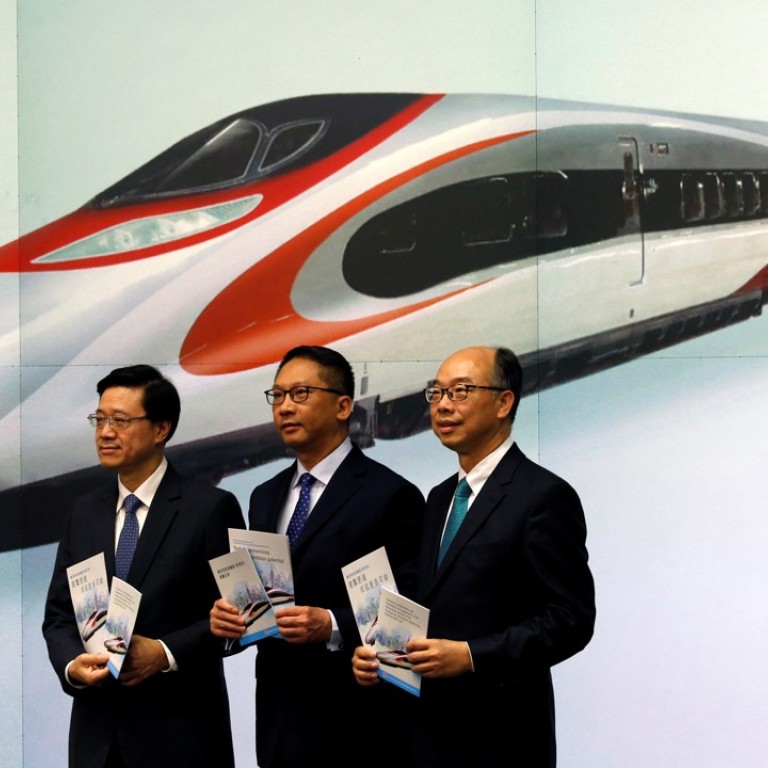
Joint checkpoint plan for Hong Kong’s express rail should copy the US and Canada model
Albert Cheng says the airport pre-clearance system as adopted by the US and Canada offers a viable model for immigration procedures at the West Kowloon terminus, and should be acceptable to all sides
The Guangzhou-Shenzhen-Hong Kong Express Rail Link is to be launched next year. The Executive Council on Tuesday announced its co-location arrangement proposal, under which mainland officers would be allowed to exercise full criminal jurisdiction on trains and platforms, as well as the border clearance zone leased to the mainland by the Hong Kong government. Article 18 of the Basic Law clearly states that “national laws shall not be applied in Hong Kong”; the proposed co-location arrangement obviously undermines the Basic Law.
Watch: Hong Kong officials speak on legal responsibilities of rail passengers
If all parties refuse to take a step back, ‘one country, two systems’ is doomed
If all parties refuse to take a step back, “one country, two systems” is doomed. The clock is ticking, it is time to come up with a practical solution.
The arrangement allows passengers flying into the US to undergo American immigration, customs, and agricultural inspections in Canada. Law enforcement officers are only allowed to exercise immigration laws inside the airport, within designated pre-clearance areas, under the supervision of Canadian officials; likewise for passengers flying to Canada from the US.
Mainland criminal law will also apply at Hong Kong’s rail link terminus
However, under the proposed framework for Hong Kong, mainland law enforcement officers are to exercise full criminal jurisdiction on trains and platforms, as well as the border clearance zone.
In order to uphold “one country, two systems”, while ensuring a convenient, efficient and safe boundary crossing, the government should adopt the pre-clearance model in the co-location plan. That way, Hong Kong gets to keep the jurisdiction and enforcement powers in the designated pre-clearance areas, and mainland officers can only exercise immigration laws within those particular areas.
Watch: All you need to know about the express rail link
Success of rail link from Hong Kong to China mainland hinges on joint immigration checkpoint
The pre-clearance operation model has been proven successful and is consistent with the Basic Law. It is clear that this proposal would draw far less opposition from lawmakers and general public. If it works well in the West Kowloon express rail link terminus, the arrangement can also be adopted at Hong Kong International Airport, the China Ferry Terminal, or even major mainland airports. This will only help to strengthen mainland-Hong Kong ties.
In this way, the co-location arrangement would no longer be seen as something to criticise, but a historical milestone of connecting people, with a more effective and efficient immigration arrangement.
After all, the co-location arrangement is not a huge problem as long as the stakeholders are willing to stop debating about politics and start being practical. If the central government only sees “one country” and neglects “two systems”, the ideal is going to be pushed further towards the edge of destruction.
Albert Cheng King-hon is a political commentator. [email protected]

